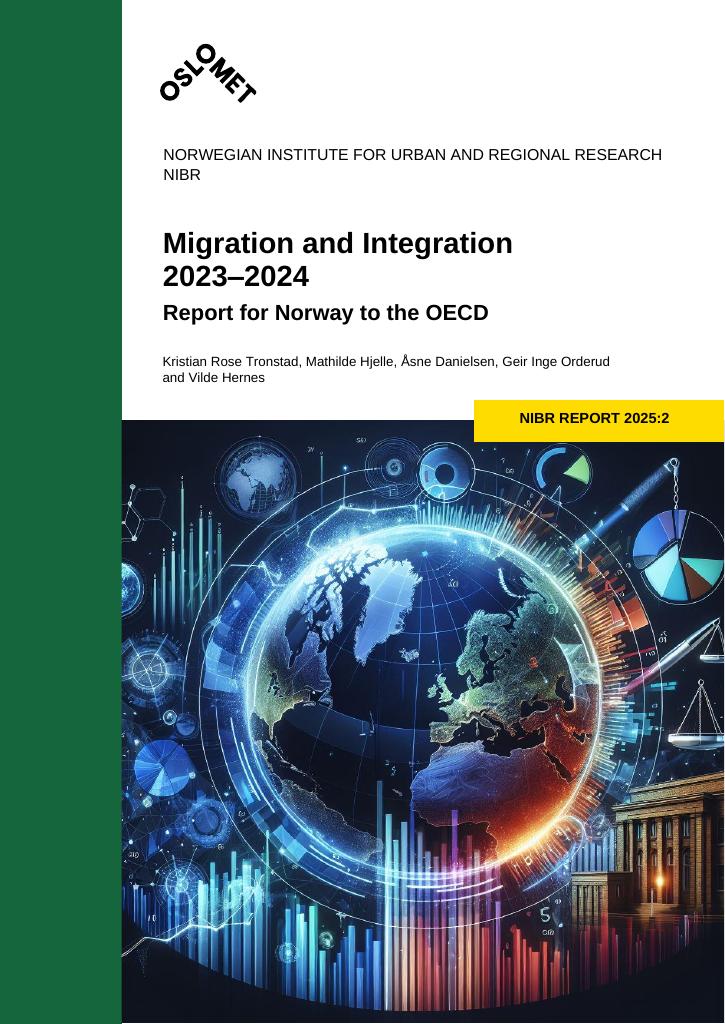Statusrapport
Migration and Integration 2023–2024. Report for Norway to the OECD NIBR REPORT 2025:2
In 2023, Norway experienced a near-record increase in net migration, adding approximately one per cent to its population. This rise was primarily driven by displaced Ukrainians fleeing the war, facilitated by Norway’s collective protection scheme. While Ukrainian migration surged, other forms of migration, such as labour and family-related migration, remained relatively stable. This marked one of the highest annual migration increases since 2011. To manage the influx of Ukrainian refugees, Norway introduced stricter regulations, including restrictions on travel back to Ukraine and exclusions for dual citizens and individuals from deemed safe areas. Additionally, the government implemented tuition fees for non-EU/EFTA students, breaking with Norway’s tradition of free higher education. Critics warned this could reduce international student numbers and impact academic collaboration, though scholarships were introduced for students from developing countries. The government also strengthened return policies, emphasizing voluntary return programs and streamlining forced returns for rejected asylum seekers. Public discourse reflected both empathy and concern. Many Norwegians supported helping Ukrainian refugees, but debates emerged over the long-term capacity of welfare and local services to integrate newcomers. The introduction of tuition fees for non-EU students sparked controversy, with critics arguing it undermined international solidarity, while supporters viewed it as a necessary financial measure. Surveys showed a generally compassionate stance toward Ukrainian refugees but raised broader concerns about balancing humanitarian commitments with national sustainability.
Publisert
Eiere
Arbeids- og inkluderingsdepartementet og Integrerings- og mangfoldsdirektoratet
Utførere
OsloMet - storbyuniversitetet og NTNU
Språk
engelsk
Kilde
ISBN
9788283094350
